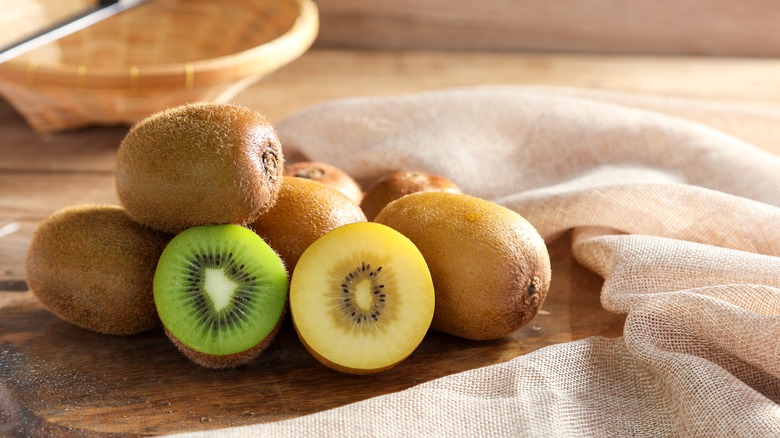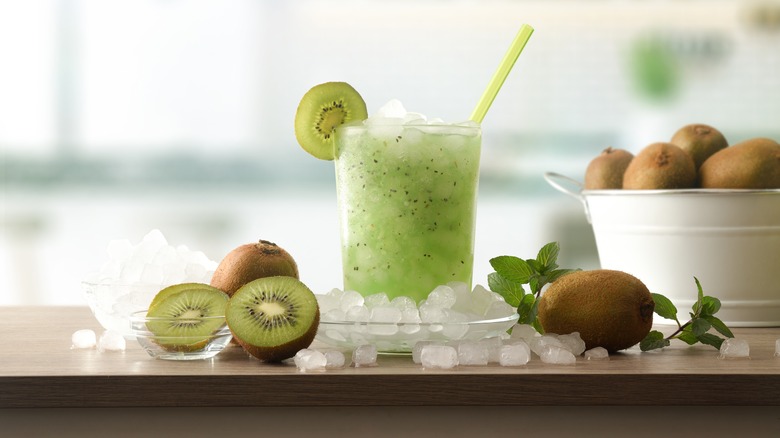Why Kiwi Is Probably Best Eaten Raw
While the summer fruits like cherries, peaches, and blackberries get all the glory, we'd argue that wintertime fruits can be just as delicious. After all, oranges, lemons, and pears are in season in the colder months, perfect for whipping up a chocolate orange tart, classic lemon meringue pie, or pear almond tart. And even less common, but no less delicious, is the sweet, tart, and texturally satisfying kiwi. In the U.S., kiwis are in season from October through May, so you have plenty of time to buy them at your local grocery store or farmers market.
Although they may not be as widely beloved as their summertime brethren, there are plenty of different ways to eat them. Of course, you can eat the neon-green flesh after peeling a kiwi, or eat it with the fuzzy skin on for the extra nutrients, if you can stomach it. You can also blend kiwis up into smoothies, make kiwi chia pudding, add them to a salad, or even use them in a chicken marinade. But although there are plenty of ways to experiment with this sweet, seedy fruit, there's a good reason you may want to stick to recipes where they're used raw.
Cooking kiwi gets rid of the nutrients
Not only are kiwis delicious, but they're full of nutrients too. These little green fruits are packed with vitamin C — in fact, Healthline reports that one 3.5-ounce kiwi will give you more than 80% of your daily vitamin C, along with lesser amounts of vitamins E and K, copper, and potassium. Eating kiwis plain is generally the best way to get these nutrients, although recipes that include raw kiwis, like smoothies and salads, won't sacrifice any health benefits either.
Cooking your kiwis is a different story, however. Once you heat them up, the vitamin C in kiwis dissipates, and you'll no longer get all those antioxidants. This doesn't just apply to kiwis — vitamin C is temperature-sensitive, so it can break down easily during cooking and when exposed to higher temperatures, although microwaving was found to result in higher vitamin C retention than boiling, according to the National Library of Medicine. On a more superficial level, cooking kiwi destroys that pretty green color we associate with the fruit, instead turning the kiwi brown. Like with avocados, this shouldn't affect the taste, but you may want to add some fresh kiwi to whatever you're cooking for a brighter appearance.
It's also advisable to stay away from kiwi ice cream or jelly, as the actinidain in the fruit causes milk to curdle, and stops gelatin from solidifying. So when in doubt, eat your kiwis raw for a tasty and nutrient-packed snack.

